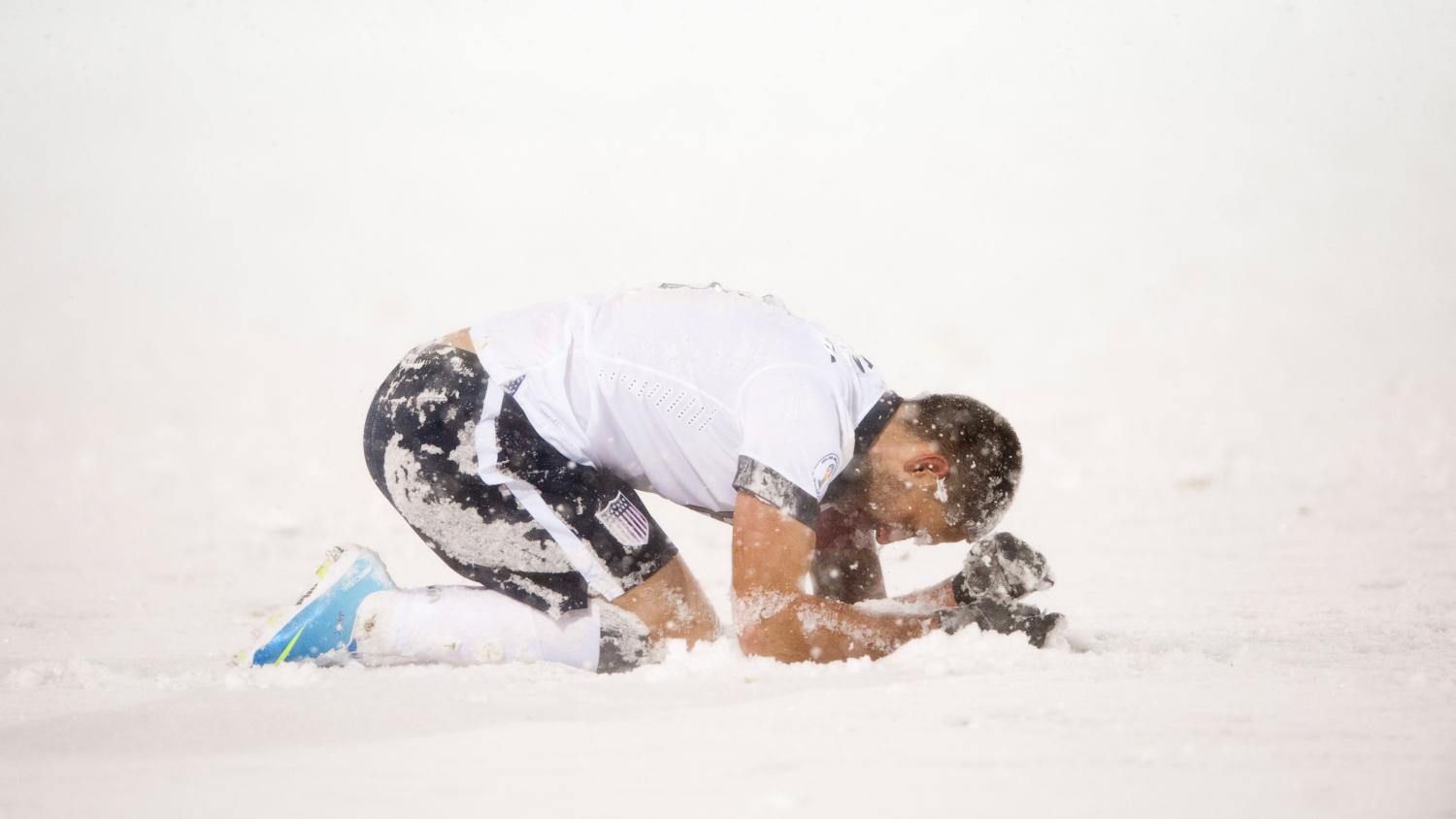It is, we're learning, a question that can be framed in countless ways — "Will it be an advantage? But will it really be an advantage? How will you prepare? How will you mentally prepare? Will you put hot chicken broth in your water bottle so it doesn't freeze?" — but really only ever has one definitive plan of action: Deal with it.
On Sunday, the USMNT started arriving in Columbus, Ohio, to collectively grow an extra layer of skin ahead of Thursday night's World Cup qualifier against El Salvador at Lower.com Field, where the forecast calls for a pleasant day of partly cloudy skies and a high of 34° F.
The squad and its legion of The Athletic writers, however, are seemingly preparing to discover the Northwest Passage.
Brenden Aaronson said Monday that his feet felt cold, leading him to consider wearing two socks — great for warmth, not so great for feeling the ball at your feet. Antonee Robinson said it was going to be like "Dads vs. Lads," so it's possible that he's not really up to speed on anything right now. Meanwhile Gregg Berhalter is proposing that he rub down the entire squad's feet with Vaseline like a sort of CONCACAF Christ figure.
It’s a mentality. pic.twitter.com/OnTghv9unT
— U.S. Soccer MNT (@USMNT) January 24, 2022
The hype for the weather in Columbus, Ontario and Saint Paul has become absurd, to the point where the mythos of it all has clouded the fact that horrible weather usually produces horrible results.
The earliest recorded uses of the winter home-field advantage come from warfare, where a superior, aggressive force is brought to its knees by a ragtag band of defenders and the weather. Perhaps the most famous example is the French invasion of Russia in 1812, when 500,000 soldiers under the command of Napoleon were routed by the Generals Janvier and Février (January and February), amounting to losses of around 380,000.
But why is the USMNT — second in the Octagonal — taking on the role of the besieged underdog against the nations in seventh (El Salvador) and eighth (Honduras)? Our players are more used to it, sure, but our players are also much better than those representing La Selecta and Los Catrachos. Shouldn't we be looking to emphasize our technical quality rather than looking to play with a depressurized ball that's assumed all the qualities of a rock?
When we look back on the most famous of cold-weather games — the Snow Clasico in Colorado — one point that's largely forgotten in the romanticism of playing without lines and the dusting of Jermaine Jones' afro is that it was a good call because Costa Rica was better than us. They knew it, we knew it.
That Ticos squad went on to the 2014 World Cup and never lost a match despite playing Italy, England, Uruguay, Greece and the Netherlands (losing to the Oranje in a shootout), so staging the match in unplayable conditions was a stroke of genius.
But do we really fear Alex Roldan and Alberth Elis that much? Do we really think that Sergiño Dest is going to be enjoying life in the frozen tundra? This is such a massive window against relatively easy opponents, and getting nine points would effectively book America's place in Qatar, but have we made it more difficult on ourselves?
These are my musings as I prepare to attend the match in Minnesota, where the current forecast is for 12° F and snow showers, and I'd be lying if I didn't personally agree entirely with Walker Zimmerman's sentiment: "I want it to be freezing. I want it to be cold. I want it to snow."
I just don't want to have to go to the Azteca and San José next window needing positive results.



